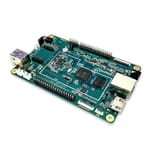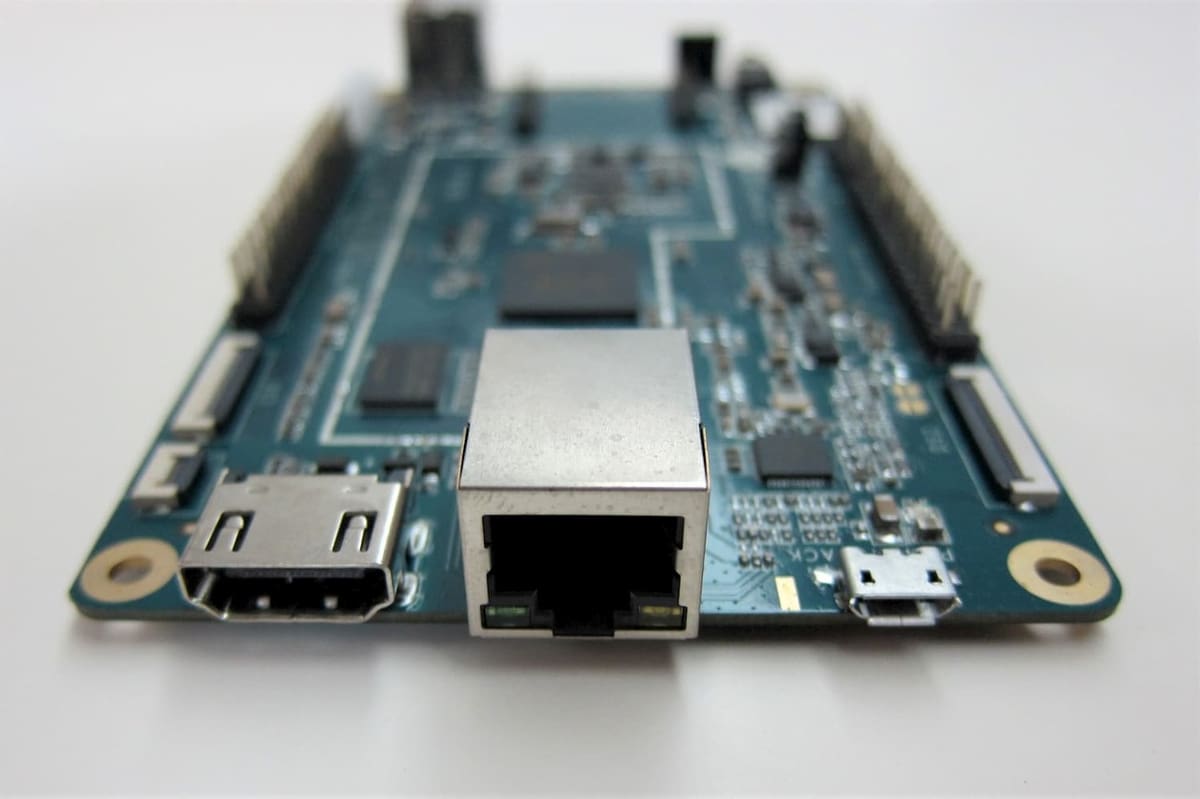Single-Board What?
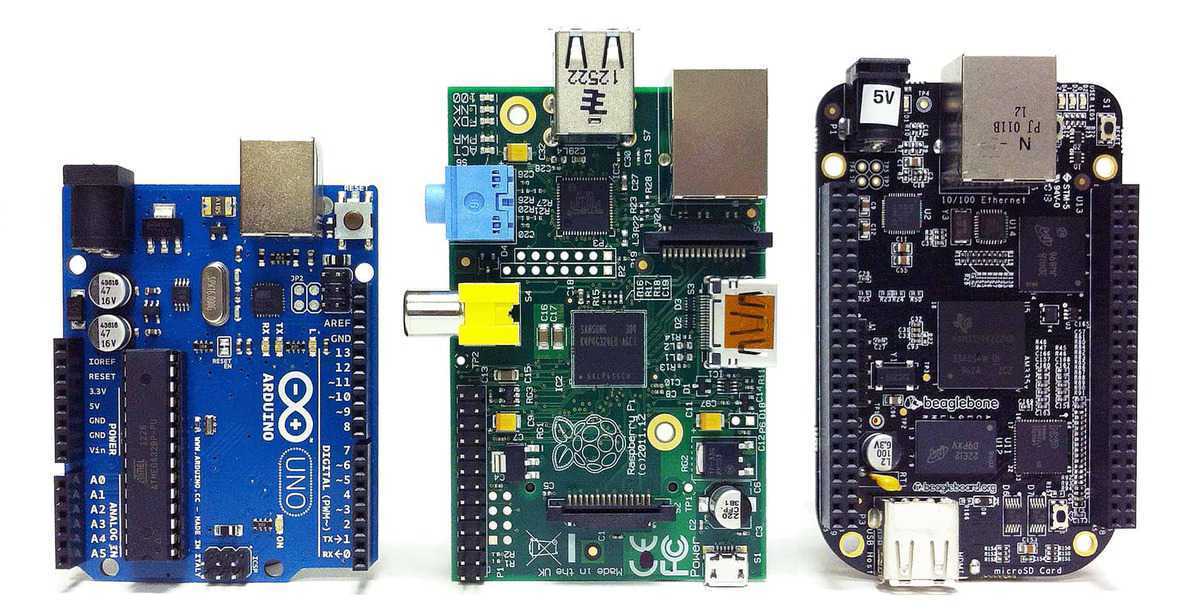
The success of the Raspberry Pi series has spawned a number of SBC alternatives with all manner of different feature sets. The Pine A64 is one such alternative and includes a number of useful features over the ubiquitous Pi.
SBCs Defined
For those less in the know, a single-board computer (SBC) is exactly what the name implies: a small form-factor computer that usually contains all the necessary hardware on a small single circuit board to allow the computer to function.
There are two broad categories of SBC used in the hobby space. One is a microcontroller-based SBC, such as the Arduino or its plethora of alternatives. These are typically small and low-power devices that have limited to no consumer inputs and outputs but tend to excel at performing specific tasks. The Arduino and its clones, for example, are popular for use in controlling homemade 3D printers. On the other hand, they typically can’t be used for general processing tasks, such as those performed by a PC.
The second category is a “general-purpose” SBC. These devices are more capable and typically have a good selection of consumer inputs and outputs, like USB, HDMI, Ethernet, Wi-Fi, Bluetooth, and others. Additionally, they normally run an operating system of the user’s choice, very much like a traditional PC or laptop.
Narrowing the Scope
The Pine A64 falls cleanly into the second category of SBCs, capable of running various flavors of Linux as well as other OSs, such as Android, Windows IoT, and BSD, provided these are compiled specifically for the Pine A64.
In the rest of this article, we’ll take a peek under the A64’s hood in order to see just what makes it tick.
Features
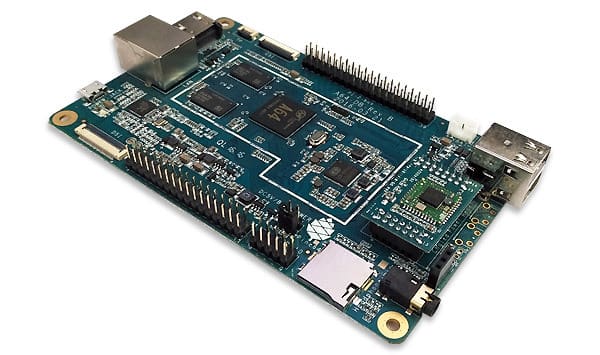
The Pine A64 is based on the Allwinner A64 System on Chip (SoC), which contains a quad-core ARM processor clocked at 1.2 GHz and supports 32- and 64-bit processing. The SoC also includes a dual-core GPU clocked at 400 MHz. It supports OpenGL ES 2.0 and OpenVG 1.1.
Important to know is that the A64 SoC used in the Pine A64 is a low-power chip with comparatively limited performance against SoCs used in competing SBCs.
Multiple Inputs & Outputs
The Pine A64 has a wide assortment of outputs, including HDMI (v1.4) and DSI ports for visual output, two USB 2.0 ports, a 3.5-mm stereo audio socket (with microphone input), and an Ethernet port that supports up to 100 Mbps (1000 Mbps on the A64+) for wired network connections.
The A64’s micro SD card slot supports SDHC and SDXC standards and micro SD card capacities up to 256 GB. There’s also a CMOS camera serial interface (CSI) port – with support for an up to 5 megapixel camera – and a touch panel port.
The DSI and CSI ports support MIPI standards, which means they’re compatible with a wide variety of display panels and cameras.
Wireless Features
Wireless connectivity is covered by the usual suspects of 802.11b/g/n Wi-Fi for network connection and Bluetooth 4.0 for device connections. That said, the wireless features of the Pine A64 are optional, added by way of a small daughter board that plugs into a dedicated header. The use of a separate board allows for some customization of the A64’s features depending on its planned use.
Other Expansion Ports
Expansion ports are well covered on the Pine A64, with no less than three general-purpose input/output (GPIO) headers provided. One of these headers is compatible with the Raspberry Pi 40-pin GPIO header, so with suitable software installed (or written), many of the expansion or Hardware Attached on Top (HAT) cards available for the Pi should be compatible with the Pine A64.
The second header Pine calls an Euler Bus. While this name is confusing – it doesn’t seem to relate to the 18th-century mathematician at all – it does provide additional GPIO functions beyond what the 40-pin Pi header provides. This could come in handy should you want to put an A64 to work as a hardware controller.
The third header is called the Expansion Bus, and it’s meant to accommodate a console adapter to provide direct programming access.
In addition to the headers, the A64 provides two battery connection ports. One is a 3-pin lithium battery port, which includes a temperature sensor connection. The other is a real-time clock (RTC) battery connector. Hooked up to a small button cell, this allows the A64 to keep track of time while powered down.
The Bottom Line
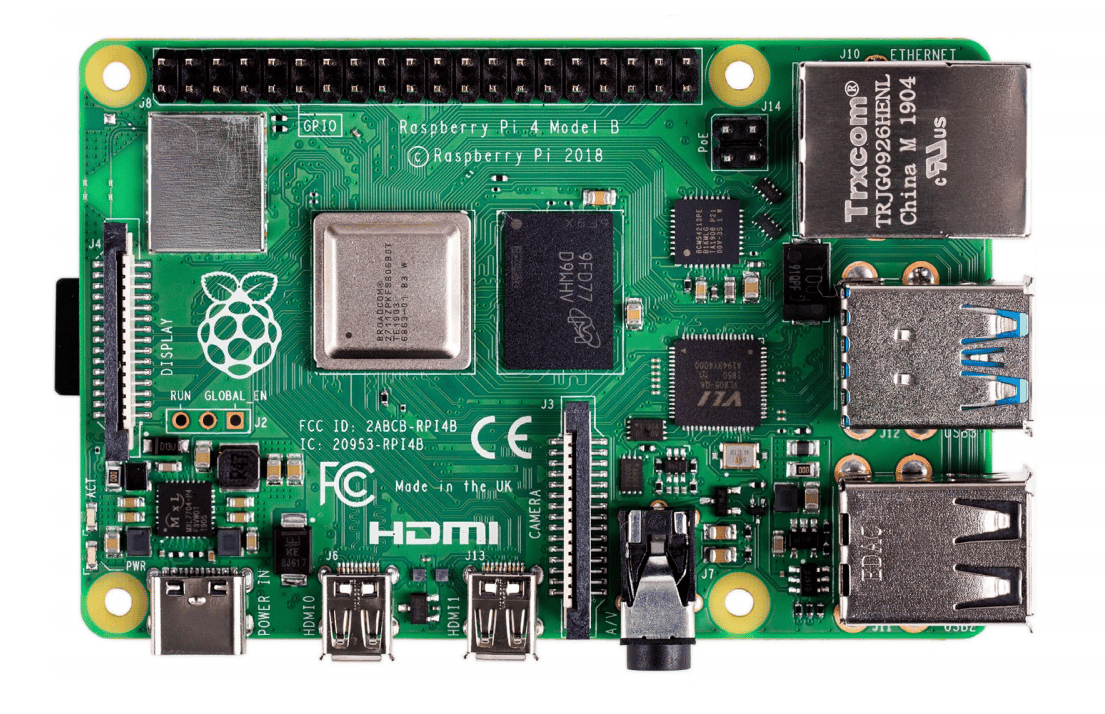
Compared to the Raspberry Pi
In terms of CPU performance, the Pine A64 compares well with the 3rd generation of the Raspberry Pi, with both featuring similar CPUs running at similar clocks. Graphics performance of the Pine A64 in comparison with the Raspberry Pi is sub-par, however, and it’s not recommended for anything other than the most basic graphics output.
The physical form factor of the Pine A64 is huge in comparison to the Raspberry Pi. This could be seen as an advantage or disadvantage depending on the intended use case. Pressed into service as hardware controllers or similar, the more generous spacing of components and GPIO on the A64 is likely to be welcomed. However, the extra bulk could be a hindrance for use cases where a small footprint is preferred.
Lastly, the Pine A64 has a comparatively large number of GPIO versus the Pi, which makes it attractive for highly-customized uses. On the other hand, consumer IO is more limited than with the Raspberry Pi, with half the USB ports (and no USB 3.0 ports) and only one HDMI port.
Potential Use Cases
Based on the performance and GPIO of the Pine A64, the board seems well suited to low-performance display applications, such as static or semi-static display screens and information readouts. It’s also very well suited for use as a hardware controller.
As examples, it could form the basis of a very advanced 3D printer controller, a sensor control board (like a weather station), a homemade Wi-Fi or Ethernet camera, or as a smart home controller.
Simply put, if a hardware controller is what you’re after, let your imagination run wild! The Pine A64 probably has the GPIO to handle whatever you need.
Technical Specifications
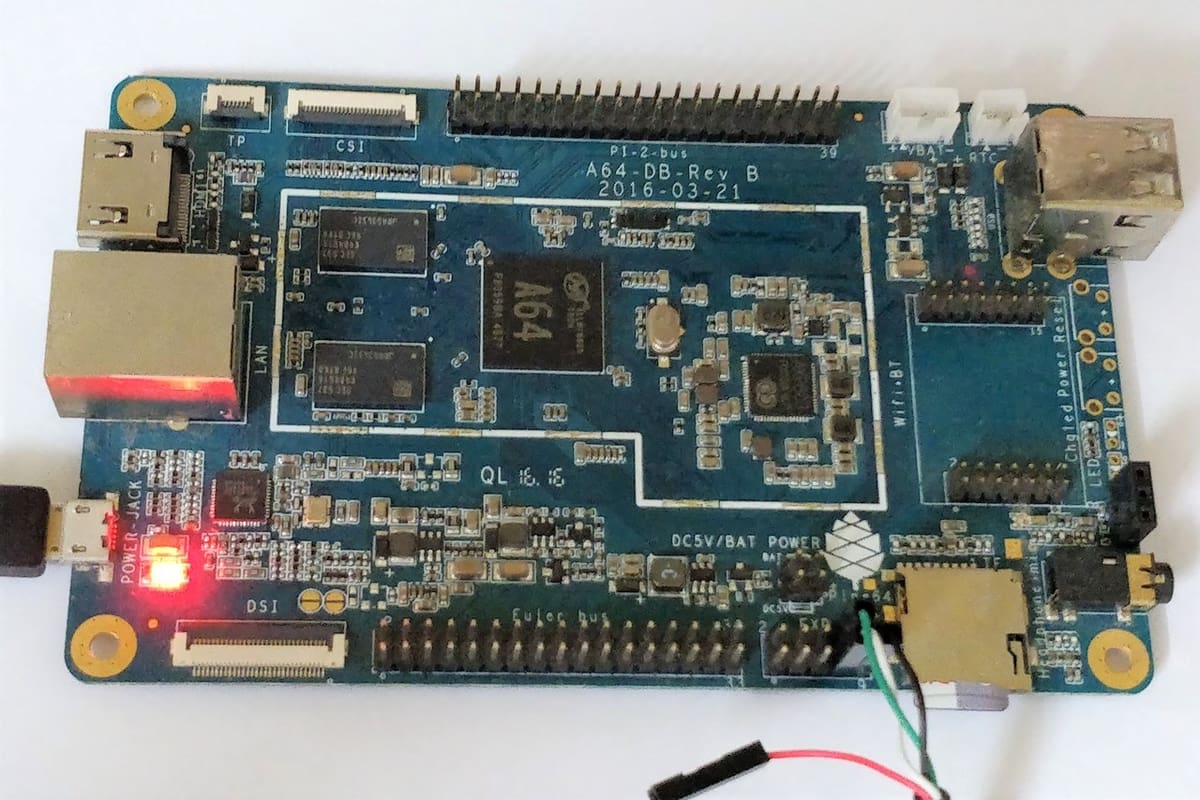
Now that we’ve thrown a bunch of words at you, here are some numbers:
- CPU: Quad-core 1.15-GHz 64-bit ARM Cortex-A53
- GPU: Dual-core 400-MHz ARM Mali MP2 (with support for OpenGL ES 2.0 and OpenVG 1.1)
- Memory: Options for 512-MB, 1-GB, and 2-GB DDR3 RAM
- Wireless:
- Optional Wi-Fi 802.11 b/g/n (via daughter board)
- Option Bluetooth 4.0 (via daughter board)
- Consumer ports:
- Full-size HDMI 1.4
- 3.5-mm headphone socket with microphone input
- 10/100-Mbps Ethernet (10/100/1000-Mbps on the A64+)
- Micro SD card slot (with support for SDHC and SDXC up to 256GB)
- 2x USB 2.0 ports
- Expansion ports:
- DSI (MiPi compatible)
- Camera Serial Interface (CSI) up to 5 MP
- Touch panel port
- Real-time clock (RTC) battery connector
- Lithium-ion battery connector (with temperature sensor)
- Raspberry Pi-compatible 40-pin GPIO header (2 x 20)
- “Euler” 34-pin GPIO header (2 x 17)
- “Exp” 10-pin console header (2 x 5)
- Power: 5-V DC at 2 A
- Dimensions: 133 x 80 x 19 mm
Where to Buy
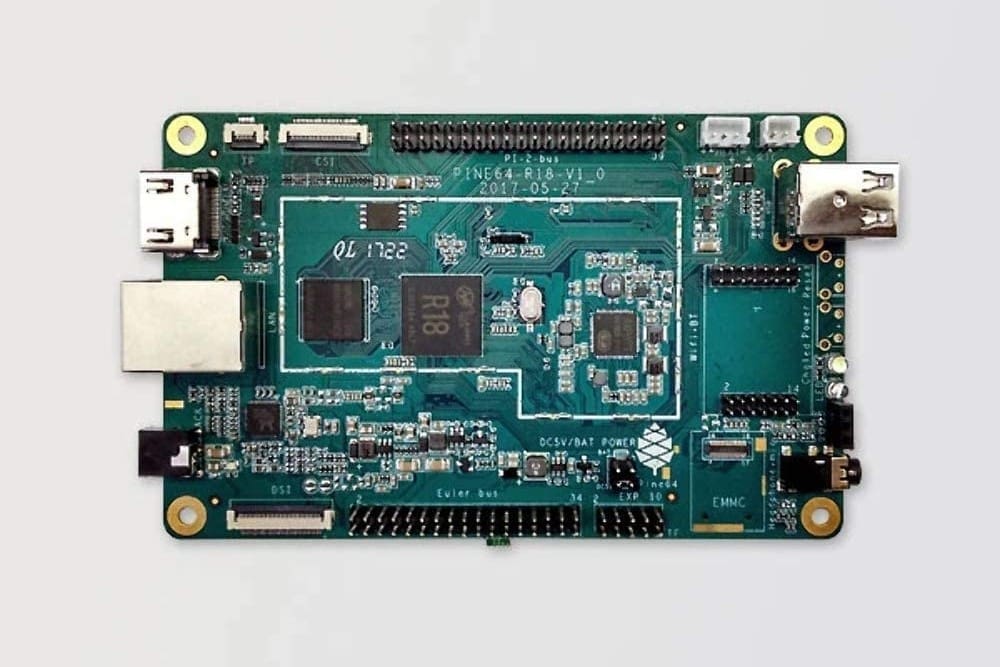
The Pine A64 is available through multiple vendors:
Lead image source: Lester Chan
License: The text of "Pine A64: Review the Specs" by All3DP is licensed under a Creative Commons Attribution 4.0 International License.
CERTAIN CONTENT THAT APPEARS ON THIS SITE COMES FROM AMAZON. THIS CONTENT IS PROVIDED ‘AS IS’ AND IS SUBJECT TO CHANGE OR REMOVAL AT ANY TIME.
